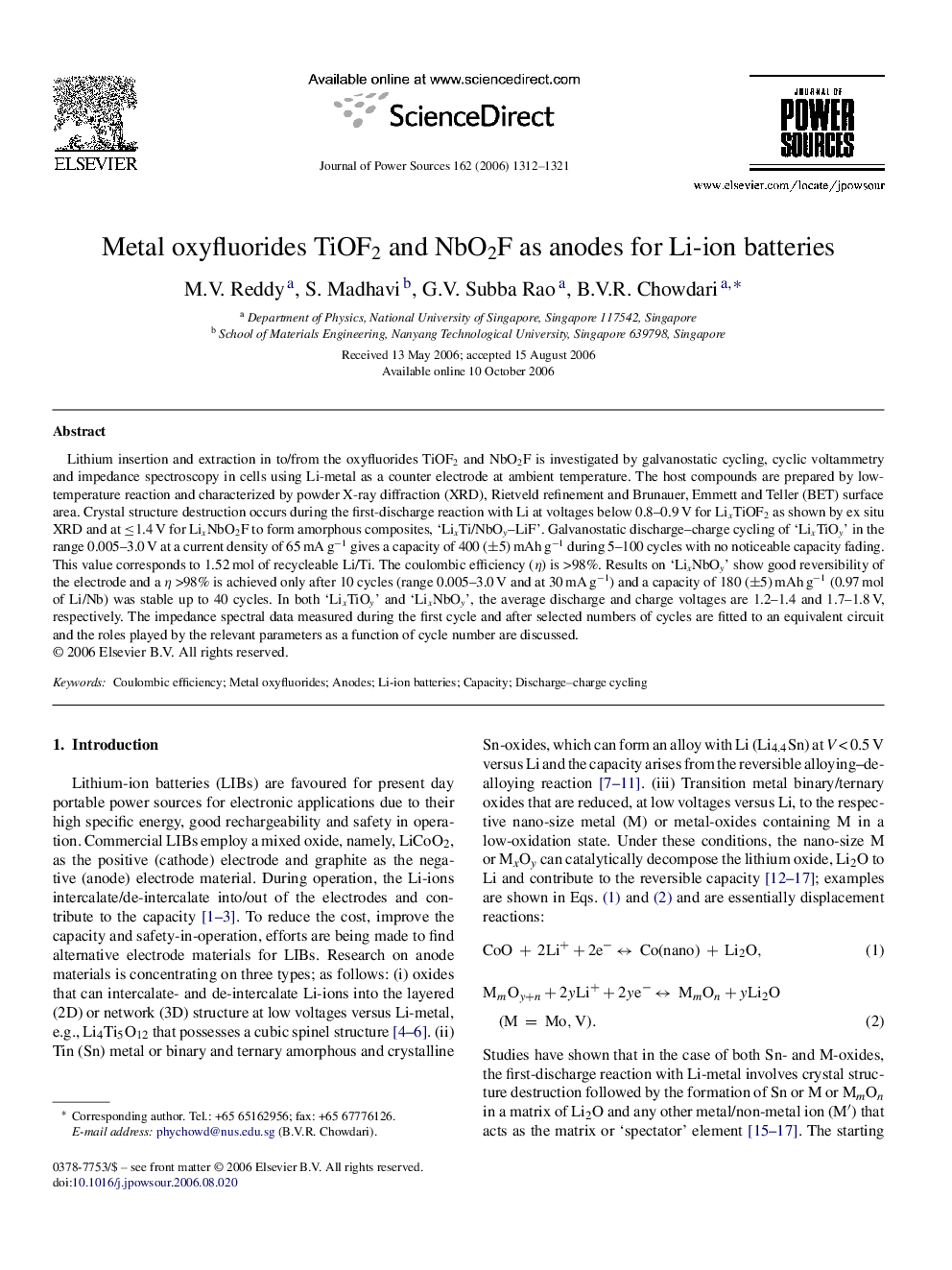| Article ID | Journal | Published Year | Pages | File Type |
|---|---|---|---|---|
| 1292509 | Journal of Power Sources | 2006 | 10 Pages |
Lithium insertion and extraction in to/from the oxyfluorides TiOF2 and NbO2F is investigated by galvanostatic cycling, cyclic voltammetry and impedance spectroscopy in cells using Li-metal as a counter electrode at ambient temperature. The host compounds are prepared by low-temperature reaction and characterized by powder X-ray diffraction (XRD), Rietveld refinement and Brunauer, Emmett and Teller (BET) surface area. Crystal structure destruction occurs during the first-discharge reaction with Li at voltages below 0.8–0.9 V for LixTiOF2 as shown by ex situ XRD and at ≤1.4 V for LixNbO2F to form amorphous composites, ‘LixTi/NbOy–LiF’. Galvanostatic discharge–charge cycling of ‘LixTiOy’ in the range 0.005–3.0 V at a current density of 65 mA g−1 gives a capacity of 400 (±5) mAh g−1 during 5–100 cycles with no noticeable capacity fading. This value corresponds to 1.52 mol of recycleable Li/Ti. The coulombic efficiency (η) is >98%. Results on ‘LixNbOy’ show good reversibility of the electrode and a η >98% is achieved only after 10 cycles (range 0.005–3.0 V and at 30 mA g−1) and a capacity of 180 (±5) mAh g−1 (0.97 mol of Li/Nb) was stable up to 40 cycles. In both ‘LixTiOy’ and ‘LixNbOy’, the average discharge and charge voltages are 1.2–1.4 and 1.7–1.8 V, respectively. The impedance spectral data measured during the first cycle and after selected numbers of cycles are fitted to an equivalent circuit and the roles played by the relevant parameters as a function of cycle number are discussed.
